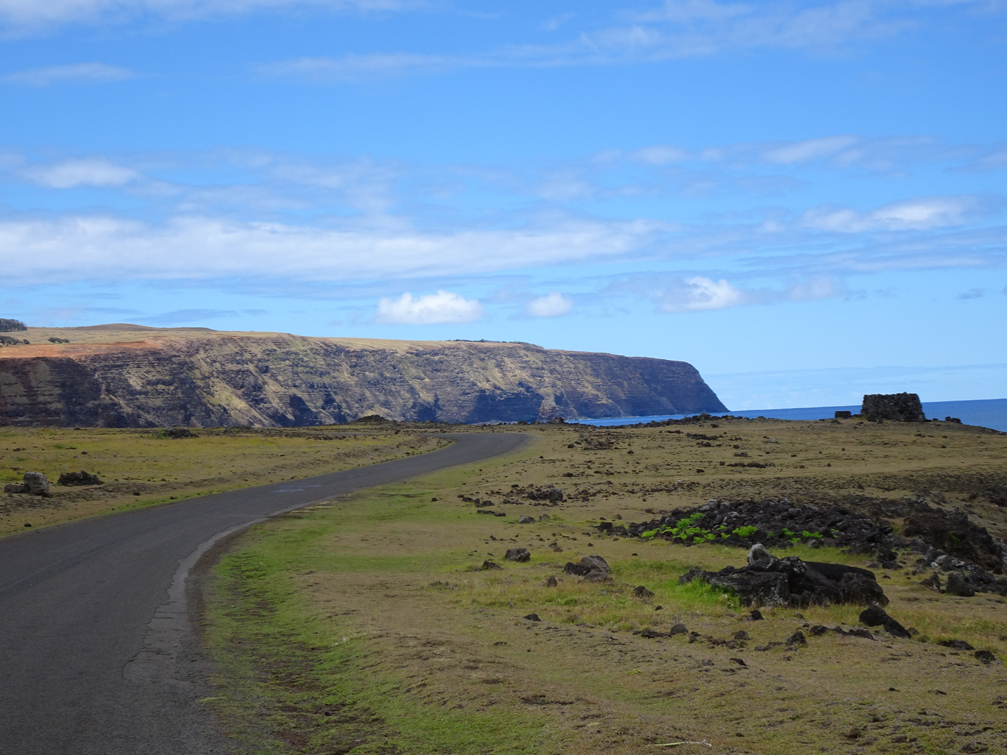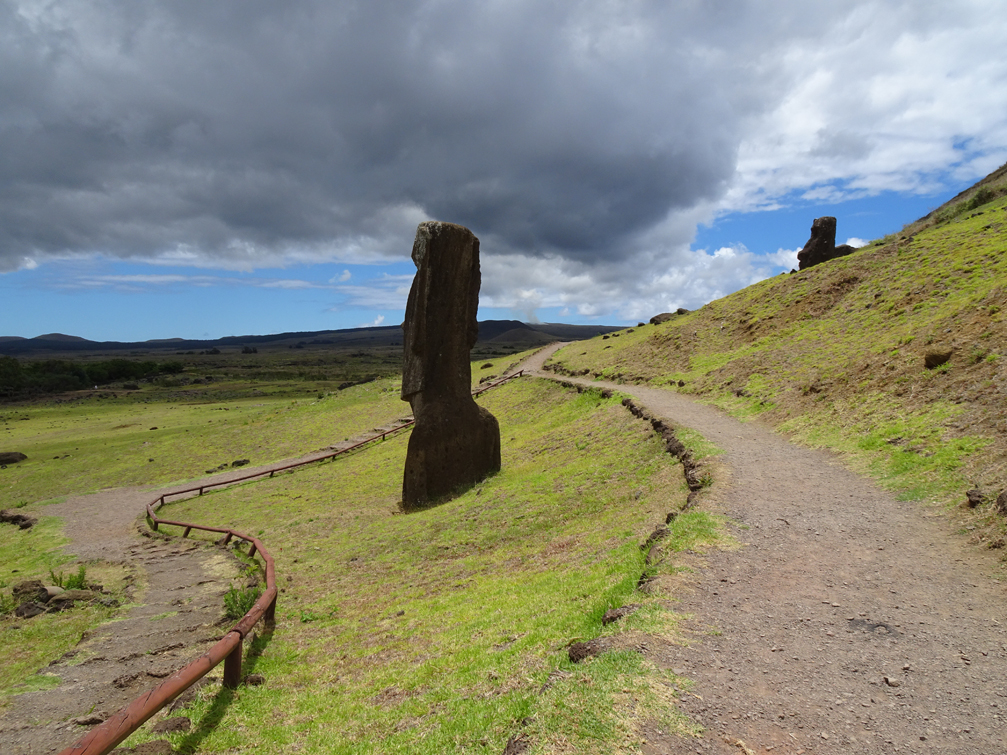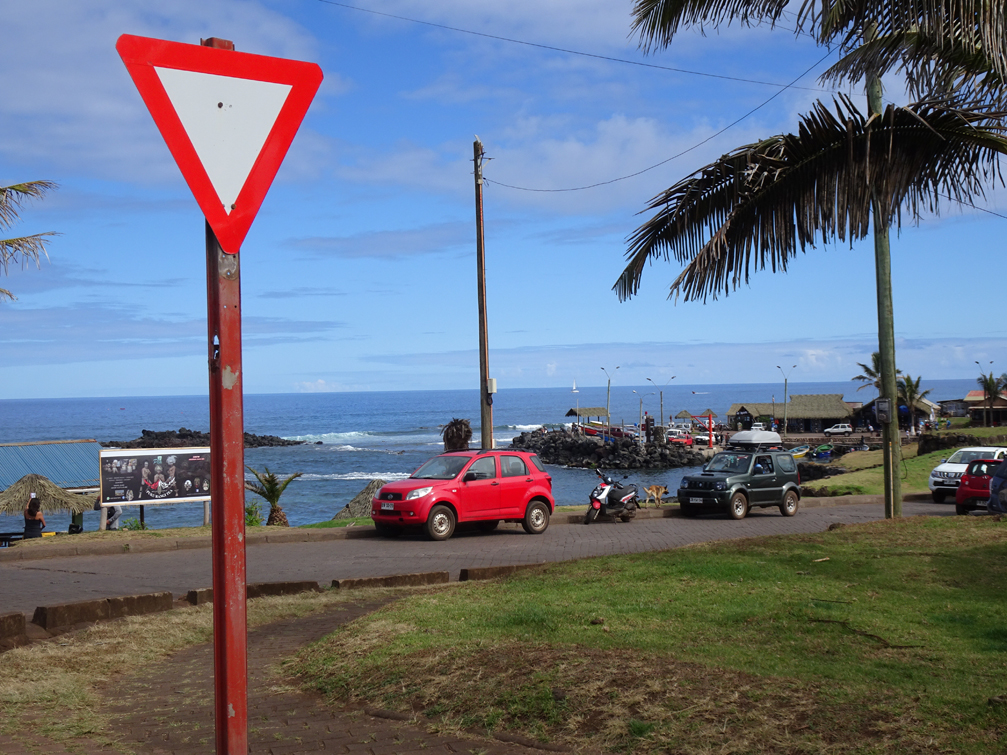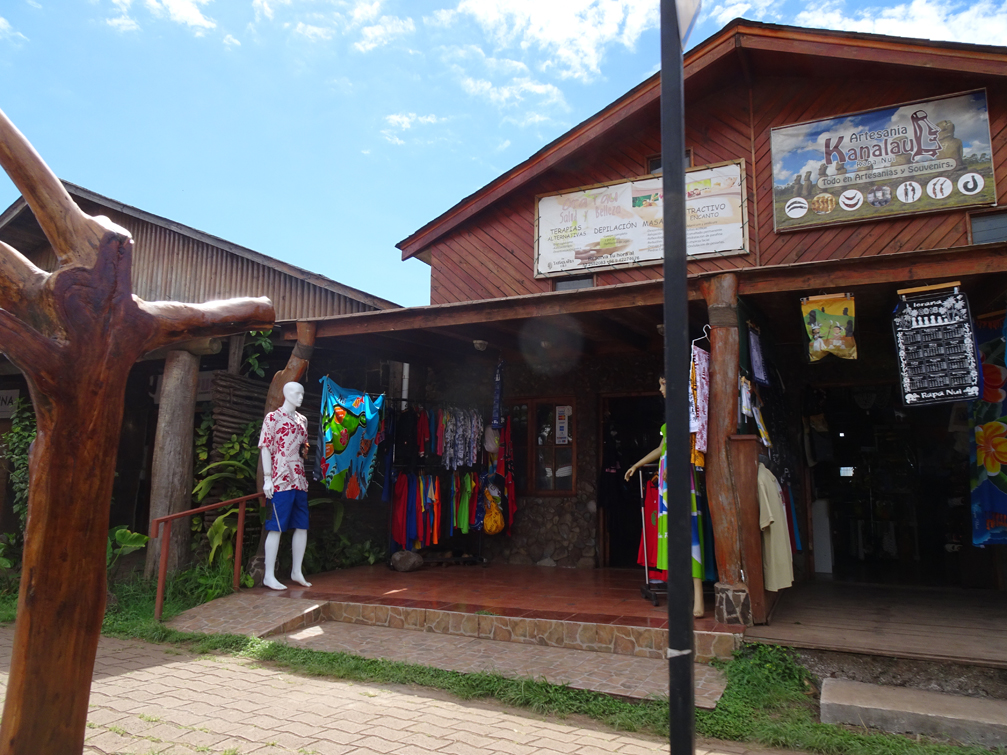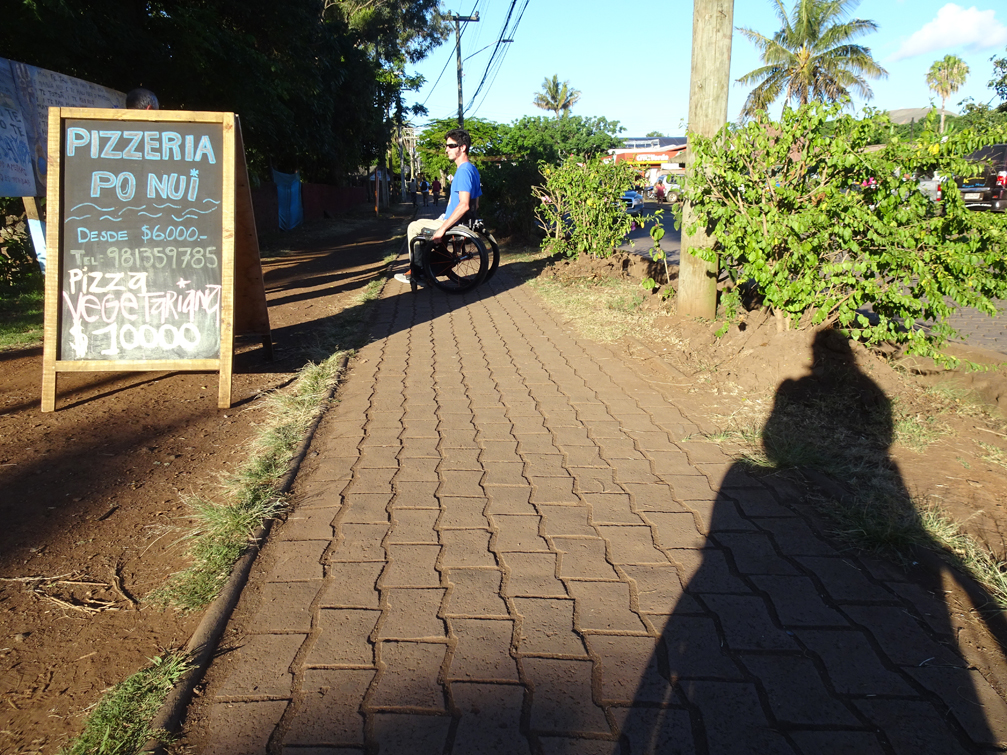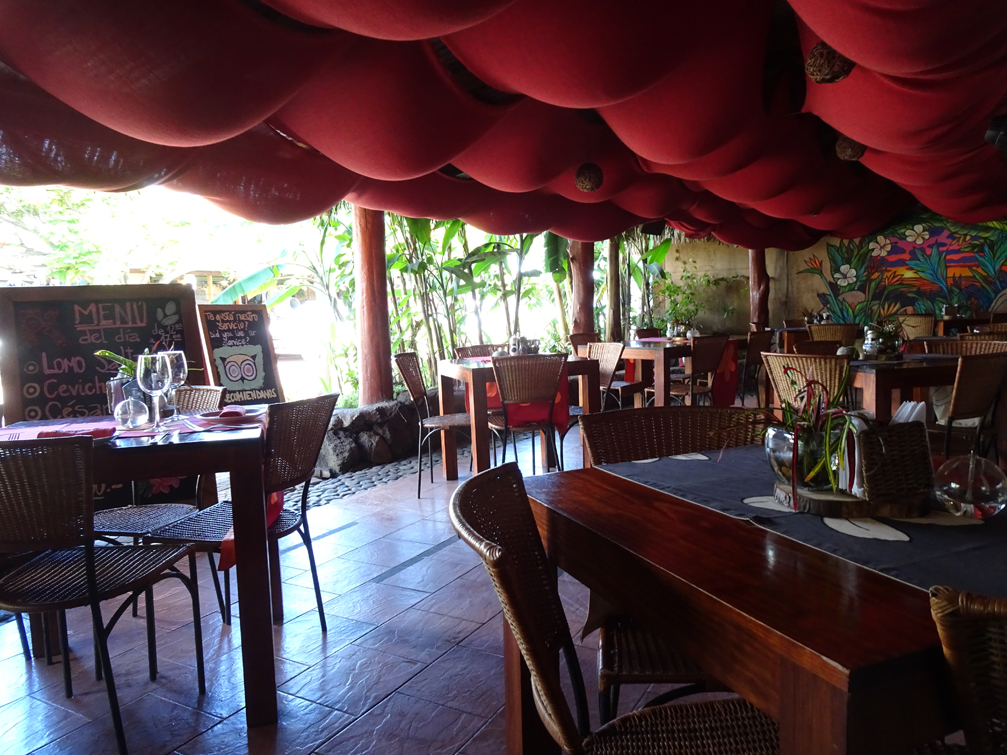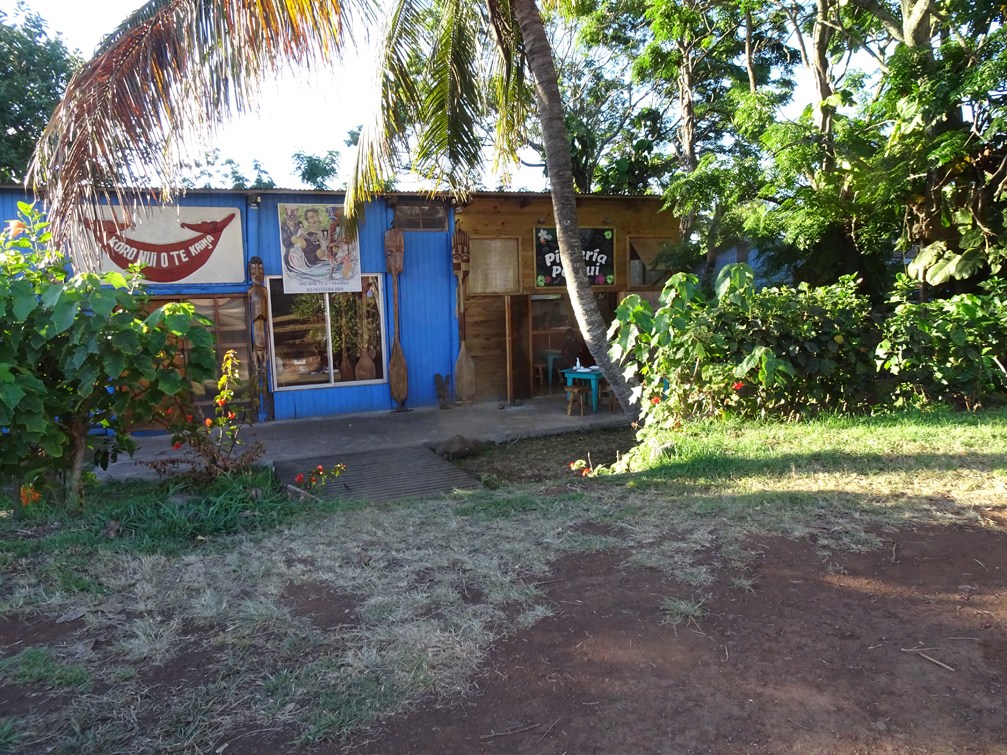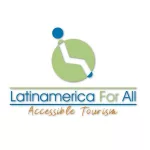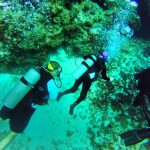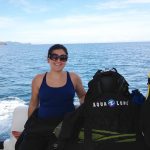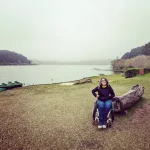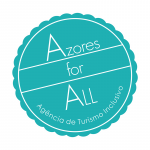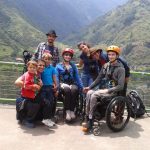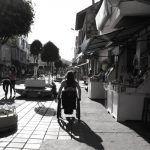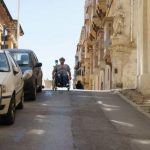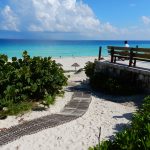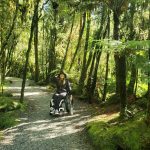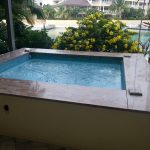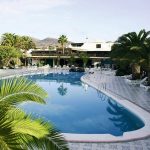Easter Island (Rapa Nui – Isla de Pascua) in off the coast of Chile in South America has been on my wish list since I heard of it. I never thought I would have the chance to go to Easter Island and see the heads (Moai). We happened to find ourselves in Chile during the holidays, staying with a friend, and since I figured this may be the only time I could get over to Easter Island, I bought us plane tickets for a short, 24-hour visit. Since we are both in wheelchairs, we were prepared for little to no accessibility. We were in for a wheelchair travel adventure.
There are only a few selected flights that go to and from Easter Island, and we arrived on the earliest flight. To fly to Easter Island was about a 6-hour-long flight from Santiago, Chile. Getting off the airplane was not as typical as it is in the States, they had a large folding wheelchair that five people carried us downstairs. The airplane did have an aisle chair aboard for bathroom use as well.
You might think that visiting a remote island for only twenty-four hours is crazy, but if you plan well, it is possible. I choose the flight that landed the earliest in the morning, to give us the entire day to explore the island. It is possible to drive around the entire island in about an hour, which made this short trip possible. We ended up circling the island a few times because it’s that small.
Navigating Easter Island Attractions
We rented a 4-wheel drive vehicle on the island so we could travel off-road, and I had to use portable hand controls that I brought to drive. This was pretty easy and did not cost very much. I reserved the vehicle online, and once we landed, there was a person from the company ready for us. The company had access to their building surprisingly, though the ramp was very steep. Once we got our rental vehicle, we were free and able to explore.
There was no designated, handicapped parking on the island; not in the town or at attractions. Most of the attractions are accessible to a point. When I say “accessible,” it means because of the barrier-free, hard-packed dirt paths with some overlaying rocks. Some paths were hilly, but often, strangers usually asked if we needed help going up hills. Many of the Moai statues can be seen from the road or parking lot. You cannot touch the Moai, but you can get very close at some of the sites.
None of the beaches on Easter Island were wheelchair accessible, the majority of them are incredibly rocky. At Ahu Tahai, we were able to get close to the ocean because the ground was firm grass. It was a popular place for people to hang out, play music, sell hand-made items, and watch the sunset with a few famous Moai overseeing. The Moai are the main attraction of Easter Island, but because the island is a volcano, we were also able to drive up to the top and look down into the crater, which is now a marshland.
Hotel Access
We first wanted to check out our hotel, Hotu Matua, since I booked it online with little knowledge of accessibility. I spent some time looking at lots of pictures to find our hotel, which seemed more accessible than others. When we arrived, we discovered there was more access than we thought.
We did not get a true wheelchair accessible room, but the room was large enough for two manual-push wheelchairs to maneuver. We were only sleeping here one night, so having a shower was not important. We did ask the front desk about wheelchair rooms, and they did have some with roll-in showers, but we booked our room on such short notice, so it wasn’t available. We also found out that the owner used a wheelchair, which is why the hotel was so accessible. Still, a few more access improvements were feasible, like a handicapped parking spot.
Food
When it came time to eat dinner, finding a place wasn’t easy. We asked the hotel front desk for suggestions because we saw a lot of stairs everywhere. The small city center is where most of the stores and restaurants are located, but the majority of buildings had steps to enter; we found only a few that had ramps. Parking on the main street wasn’t too bad, since there was no traffic. Navigating the sidewalk was challenging because of the large cracks, holes, drops, and no curb ramp. Though the town was incredibly small, the sidewalks tested all our manual-push wheelchair skills.
Public Bathrooms
Wheelchair accessible bathrooms were scarce. The airport has one, and our hotel had another, but since Easter Island is so small, we could always return to the hotel when needed. At the popular historical site, Centro Artesanal Rano Raraku, we found another bathroom that was doable for a small manual wheelchair. It was just large enough to get the wheelchair in and close the door, but no grab-bars. The entry to the bathroom was about 26 inches. There were tree roots in the pathway as well. This site also has a little arts and crafts market as well as a small restaurant that only serves lunch. This site was surprisingly accessible with barrier-free pathways to and around the Moai heads.
Conclusion
This island has a lot to improve on in relation to accessible tourism. I never saw a vehicle with a lift, and I would never recommend a power wheelchair to visit Easter Island. Luckily, the locals of the island are exceptionally friendly and kind; someone was always around to help when needed. Wheel the World is an organization that offers accessible equipment and activities on Easter Island.


